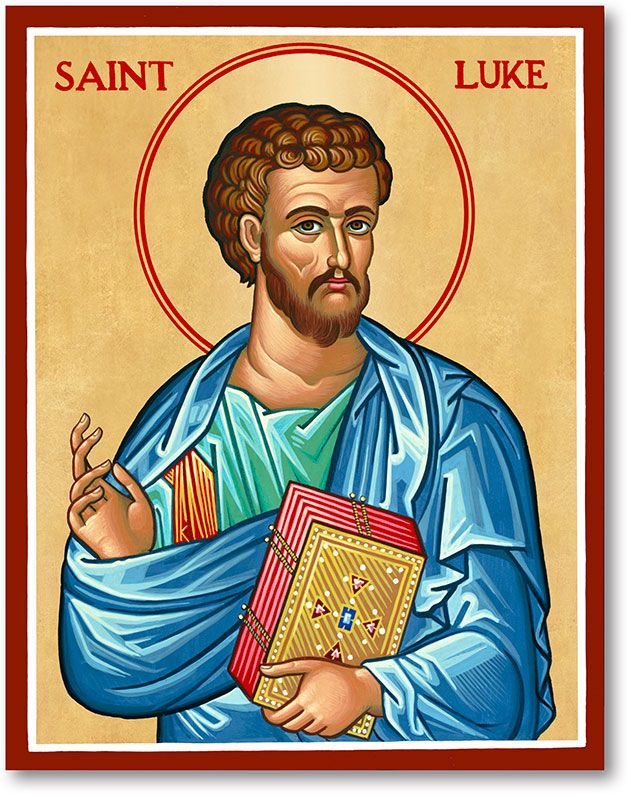All of creation rejoices, O Lady full of grace, the order of angels and the human race together, a hallowed temple, a spiritual paradise. God became incarnate from you, the pride of the virgins, and became a child, He Who is God from all ages. For He made your womb a throne for Himself broader than the heavens. In you O Lady full of grace, all of creation rejoices in you! Glory to you!
(Divine Liturgy of St. Basil the Great, p. 31)
—
In the sixth month the angel Gabriel was sent from God to a city of Galilee named Nazareth, to a virgin betrothed to a man whose name was Joseph, of the house of David; and the virgin’s name was Mary. And he came to her and said, “Hail, O favored one, the Lord is with you! Blessed are you among women.”
Luke 1: 26-28
Christ is Risen!
During the prayer of consecration, the people sing a hymn “We praise You, we bless You, we give thanks to You, and we pray to You, O Lord our God.” (Divine Liturgy of St. Basil the Great, p. 29) In many churches, the prayers offered by the celebrant are inaudible, so many people would miss out on these beautiful prayers of St. Basil. The purpose in saying this is not to debate it—there are strong arguments on both sides as to whether these prayers should be heard or not. Just to give some context to this next part of the Liturgy of St. Basil, after the prayer of consecration, where the celebrants references “forefathers, fathers, patriarchs, prophets, apostles, preachers, evangelists, martyrs, confessors, teachers and every righteous spirit made perfect in the faith,” (Divine Liturgy of St. Basil the Great, p. 31) the prayer then continues with the par excellence person of all those who have been made perfect in the faith, the Virgin Mary. This audible exclamation is almost like a continuation of the prayer, “and every righteous spirit made perfect in the faith, ESPECIALLY for our most holy, pure, blessed and glorious Lady, the Theotokos and Ever-Virgin Mary.”
After this exclamation, at every Divine Liturgy, except for some of the feastdays of the Lord, there is a hymn to the Virgin Mary. In the Divine Liturgy of St. Basil the Great, the hymn is called, in Greek, “Epi Si Heri,” and the first words in English are “All of Creation Rejoices.” This is one of four audible parts of the Divine Liturgy of St. Basil that differ from the Divine Liturgy of St. John Chrysostom. (The other three are at the Words of Institution, the phrase “He gave it to His Holy disciples and apostles saying” is added before “Take, eat, this is My Body. . .” and “Drink of this all of you. . .” and at the end of the Divine Liturgy, the prayer of the Ambon). This hymn is always sung during the Liturgy of St. Basil.
The compositions of this hymn are magnificent, the hymn is sung with great energy, and this is good because it reflects the power and majesty of the words being sung. First of all, “all of creation” rarely rejoices at anything. There is much division, even within Orthodoxy, but one thing we all rejoice over is the Virgin Mary. The angels and the human race rejoice together. The Virgin Mary is the mother of us all. And in the hymns of the church, she is exalted with greater honor than the Cherubim and the Seraphim (the angels). Thus, the hymn references the unity amongst angels and the human race in exalting her.
History has taught us that God resides in the temple. He is present everywhere of course, but He is the center of the temple. In the Old Testament, the Jews thought He was only in the temple. In this era of the Church, Christ stands on the Holy Altar at all times. Our bodies, of course, are temples. In
I Corinthians 3:16-17, St. Paul writes “Do you not know that you are God’s temple and that God’s Spirit dwells in you? If anyone destroys God’s temple, God will destroy him. For God’s temple is holy and that temple you are.” The Virgin Mary serves as the prototype in making her body a temple that held the Son of God. Our bodies function in a similar manner. Through Holy Communion, we also become a “Theotokos,” a “God-bearer”. In Luke 17:21, Jesus says “The Kingdom of God is within you.” Indeed, the Theotokos showed that this was possible, that a “spiritual paradise” can lie within each of us.
The icon above the altar in most Orthodox Churches depicts the Virgin Mary with the Christ-child. It is called the “Platitera” which is translated “wider” or “more spacious.” We know that there is no beginning or end to God. When a mortal king sits on a throne, it takes up a finite amount of space. But when the immortal God sits on His throne, the space is infinite. The word “Platitera” is used in this hymn, in this translation it is referred to as “broader” because the womb of the Virgin Mary, metaphorically, became the throne for the uncontainable God.
“O Lady full of grace” is used twice in the hymn, because it is the greeting that the Archangel Gabriel used when he announced God’s plan for the Virgin Mary’s life, that indeed she was favored and blessed among women. After the Annunciation, the Virgin Mary sang a song of praise, that today we called the “Magnificat” in Luke 1:47-55. In Luke 1:48, she says “For behold, henceforth all generations will call me blessed.” Indeed, this is true, and it is reflected in our hymns, most notably this one which follows the consecration.



